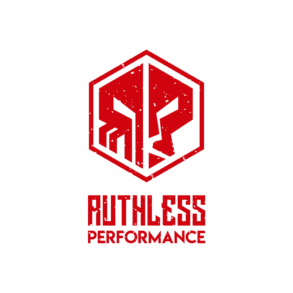Given that Ruthless Performance is based out of a land-locked state, the paddleboarding or surfing communities are not populations which we traditionally cater to, but given my own predisposition to the sport (surf when I’m on the west coast, paddleboard on the east…), I’ve spent some time thinking about the demands of paddleboarding, as well as what it takes for me to make sure that I’m most prepped for when the opportunity to take a road trip with the board arises.
 Paddleboarding itself is a workout and can be easily classed as its own sport, so with this in mind, most of the strength & conditioning exercises and techniques I’ll employ to maximize performance on the board are done to stimulate some of the neglected or underused movement patterns, muscles, and skills while alleviating some of the overuse that can develop over long days on the board.
Paddleboarding itself is a workout and can be easily classed as its own sport, so with this in mind, most of the strength & conditioning exercises and techniques I’ll employ to maximize performance on the board are done to stimulate some of the neglected or underused movement patterns, muscles, and skills while alleviating some of the overuse that can develop over long days on the board.
Consider the following points to help develop your skills on the board no matter how far away you are from your favorite spot…
1. Glute Development Still Reigns Supreme
The glutes are the powerhouse of the body and are pretty heavily correlated to peak  athletic function (regardless of domain). Even in the case of paddleboarding, where you are more stationary and have less force input/output demands than some other sports, you still need the glutes for a handful of reasons.
athletic function (regardless of domain). Even in the case of paddleboarding, where you are more stationary and have less force input/output demands than some other sports, you still need the glutes for a handful of reasons.
Glutes work in synchrony with the lats (most notably through the lumbodorsal fascia) to assist in each stroke of the paddle. Weak glutes in paddleboarding can also cause severe long-term back pain. Because the standing position on a paddleboard relies on a hinged hip, the inability to maintain tension over time throughout the glutes causes unnecessary tightness in the low back.
Consider including box squats, 180 hip extensions, side-lying clams, lateral band walks, deadlifts, and glute bridges/ thrusts to maximize development of all three glute muscles (max, min, med).
2. Don’t Fall Into Sport-Specific Traps
 It’s easy to see how an athlete would want to utilize his/her time in the gym replicating paddle after paddle, pop-up after pop-up, but this is not an efficient use of time. Keep the paddleboarding-specificity in the water. When strength training for the sport, you should want to engage in what we call ‘anti-specific training’, which mostly just means engaging in exercises, drills, and positions that bring about a more neutral posture while maximizing power and force development that you couldn’t otherwise get while on the board.
It’s easy to see how an athlete would want to utilize his/her time in the gym replicating paddle after paddle, pop-up after pop-up, but this is not an efficient use of time. Keep the paddleboarding-specificity in the water. When strength training for the sport, you should want to engage in what we call ‘anti-specific training’, which mostly just means engaging in exercises, drills, and positions that bring about a more neutral posture while maximizing power and force development that you couldn’t otherwise get while on the board.
Many paddleboarders will align themselves with the ski erg for their energy system training because it most closely replicates their sport. I’m highly averse to the ski erg to begin with, then putting a population whose entire sport exists in a state of flexion onto this machine is a recipe for overuse injuries in the shoulder (and elbow for that matter), slipped discs in the lumbar spine, and hindered transverse plane arthrokinematics.
3. The Value of Unilateral Work Can Not Be Overstated
There aren’t very many sports or events that exist on such an unstable surface, so maximizing strength and stability at contact points is paramount. Then, take a guy who boarders on flatfooted like me and put him on a paddleboard for a few hours and his/her ankles will be smoked. Strengthening the feet with various unilateral drills will help extend a paddleboarders’ time on the board each day.
Most exercises that can be done on two feet can be done on one. In fact, performing  some of the aforementioned glute exercises on a single-leg is a great way to maximize time in the gym. Some of my favorite unilateral exercises are Unilateral Cable Deadlifts (can be done with barbell, dumbbells, kettlebells…), contralateral push press, contralateral low cable row, pistol squat, Chaos Rear-Foot Elevated Split Squat.
some of the aforementioned glute exercises on a single-leg is a great way to maximize time in the gym. Some of my favorite unilateral exercises are Unilateral Cable Deadlifts (can be done with barbell, dumbbells, kettlebells…), contralateral push press, contralateral low cable row, pistol squat, Chaos Rear-Foot Elevated Split Squat.
This shouldn’t be misconstrued as instability work on a BOSU ball. The goal of the exercise isn’t to make balancing harder, but rather to make balancing easier over time. This can not be achieved on something like a BOSU ball / instability trainer.
Overall this has barely scratched the surface of strength training for paddleboarders. These are just some quick thoughts I’ve had on this topic, mostly as it has related to my own development as a paddleboarder, but from the perspective of a scientific and methodological practice and training environment.

Are you a paddleboarder interested in starting a workout program to maximize your skills on a board? Reach out to me at John@RuthlessPerformance.com to get started today.
